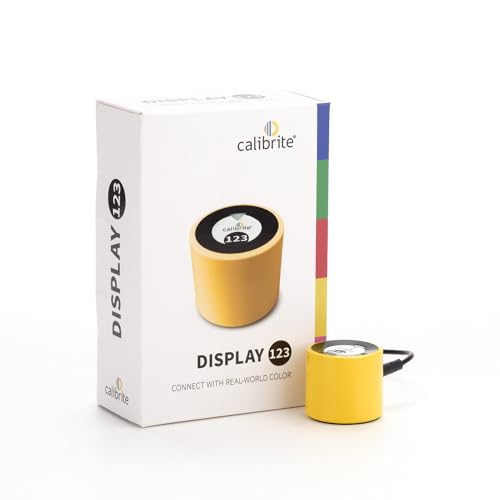How to Calibrate a Monitor: Guide for Designers
If you're a designer, calibrating your monitor is crucial for ensuring colour accuracy and consistency across devices. An uncalibrated monitor can lead to all sorts of issues down the road that end up costing you time and money.
It can sound intimidating to calibrate a monitor if you've never done it, so I put this guide together to walk you through the entire process step-by-step. By the end, calibrating your display will feel like second nature.
Table of Contents
Why Monitor Calibration Matters for Designers
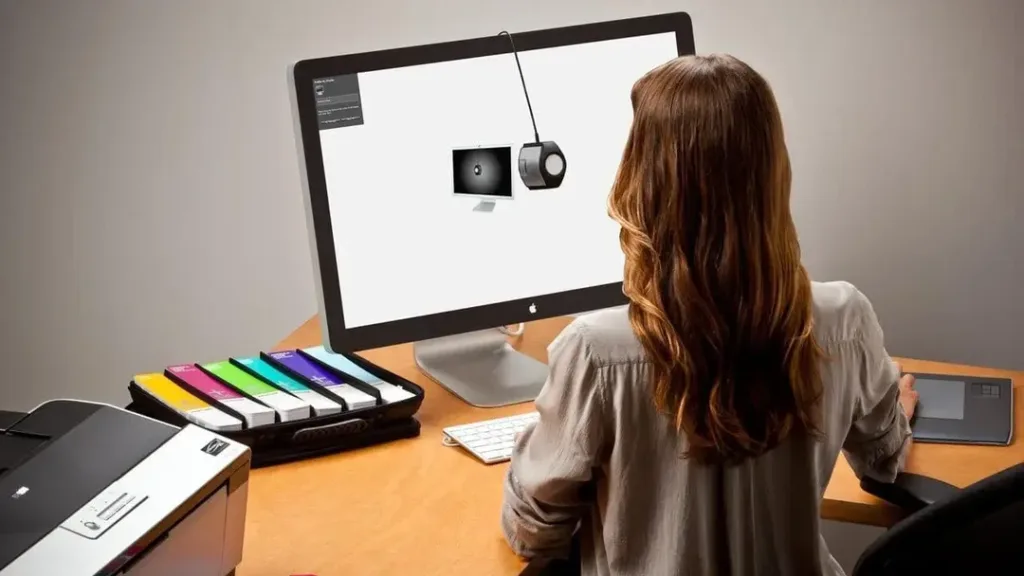
Before we get into the nitty-gritty of how to calibrate, let's talk about why proper monitor calibration is so necessary if you work in design:
Ensures Colour Accuracy
If your monitor is not calibrated, you cannot trust the colours you see on your screen. An uncalibrated monitor often displays colours and brightness incorrectly, skewing towards blue or red casts.
This means the design decisions you make based on the inaccurate colours on your screen will also need to be corrected. When your work is printed or viewed on properly calibrated devices, the colours may look thoroughly off. Monitor calibration gives you a reliable colour on which to base design choices.
Consistency Across Devices
Design projects often involve sharing files and assets across teams and devices – from initial concept on your monitor to final production by printers or manufacturers.
A consistent project vision is challenging if everyone's monitors show different colours, shadows, and brightness levels. Calibration aligns displays to offer the same colours so that what you preview is what you'll get on any calibrated device.
Saves You Time and Money
Dealing with colour inconsistency issues in the late stages of projects takes time, reworking designs, compromising integrity for quick fixes, and communicating colour shifts across stakeholders. It also costs money to rerun production and printing.
Proper monitor calibration early on sidesteps all these headaches down the road. The small time investment to calibrate pays back exponentially in time and money savings from avoiding mistakes.
How Often You Should Calibrate a Monitor
You must calibrate your monitor regularly to keep all the benefits of calibration. But how often is it frequent? Generally, you should plan to calibrate:
- Every 1-2 weeks for consistent colour accuracy
- If you notice colour looking off
- After making hardware changes like updating graphic cards
- When bringing on a new display
- After moving display locations
- After changing the display settings
You can't go wrong if you calibrate every couple of weeks as routine maintenance for your display. Add it to your calendar if it helps!
Many monitors also have internal calibrators that run automatic calibration on a schedule. I suggest manual calibration more regularly since it gives you finer control.
The Monitor Calibration Process
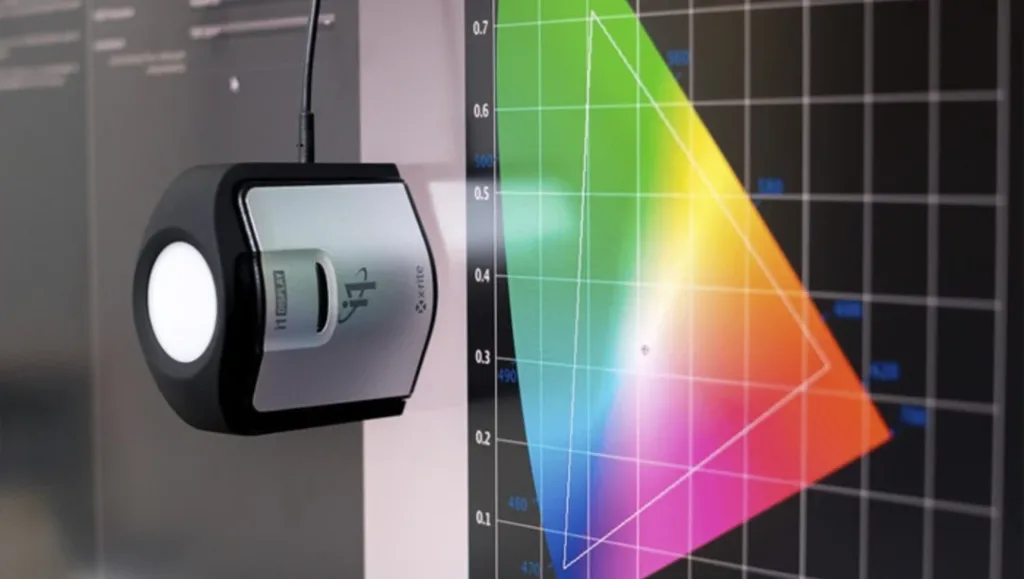
Now that you know why it matters and how often to do it, let's get into the step-by-step process for monitor calibration:
1. Set Your Screen to Optimal Brightness and Temperature
The first step is ensuring your monitor settings are configured optimally so calibration can do its job correctly. Here are the key settings to check:
Brightness
- Aim for 120-160 nits (a measure of brightness)
- Too dark makes colours muddy; too bright distorts contrast
Temperature
- Shoot for 6500k, which is considered “true white.”
- Lower is reddish/warmer; higher is bluish tones.
Making these quick monitor adjustments gives calibration the best baseline to tune the colours accurately.
2. Select Your Calibration Device and Software
To calibrate your monitor, you need two tools:
Calibration Device
This measures the colours on your monitor by placing a sensor directly on the display. Popular options:
- 𝗘𝗡𝗦𝗨𝗥𝗘 𝗔𝗖𝗖𝗨𝗥𝗔𝗧𝗘 𝗖𝗢𝗟𝗢𝗥: Groundbreaking lens-based color engine provides a higher level of color accuracy for multiple monitors. Spyder X Pro features room-light monitoring, automatic profile changing and significantly more precise screen color, shadow detail and white balance.
- 𝗘𝗔𝗦𝗬-𝗧𝗢-𝗨𝗦𝗘: Spyder X Pro is so intuitive, you don’t have to be a color expert. It features quick and easy single-click calibration and wizard workflow with 12 predefined calibration targets for advanced color accuracy.
- 𝗤𝗨𝗜𝗖𝗞 𝗖𝗢𝗟𝗢𝗥 𝗖𝗔𝗟𝗜𝗕𝗥𝗔𝗧𝗜𝗢𝗡: Calibrating your monitor to achieve color precision is quick and easy, taking just a minute or two.
- The new standard in calibration devices capable of measuring up to 3,000 nits using advanced HL (high luminance) sensor for greater color accuracy for current and new display technologies
- Accurately measures, calibrates and profiles LCD, mini-LED, OLED displays, and Apple XDR panels
- Calibrite PROFILER software included, with fully customizable features such as White Point and Gamma, Profile Validation, Uniformity Check, and more for Mac and Windows OS and compatible with some 3rd party software packages
- Color correct your monitor… Easy as 1-2-3
- Get and keep your monitor color right for editing, gaming and any time color-accurate viewing is important (like clothes shopping or home decorating)
- Supports 2 displays per workstation
Calibration Software
This software analyses monitor colours using the sensor data and makes correction adjustments. They are often included with devices or available standalone.
With the hardware sensor and software ready, you're set to move on to the actual calibration.
3. Run the Calibration Process
The exact calibration workflow varies slightly for different sensor devices and software but broadly goes like this:
- Place sensor on the monitor
- The software scans current monitor colours
- Software guides monitor colour adjustments (super easy!)
- The final colour profile was created
- Your monitor is calibrated!
The process is straightforward and fully guided by the software. It usually takes just 5-10 minutes.
Tip: temporarily Disable flux or other colour-changing apps during calibration to ensure accuracy.
4. Export and Import Your Monitor Profile
You calibrated – awesome! But for other programs and design files to display colours correctly on your monitor, you must import the colour profile created during calibration into your operating system and software.
Here's how to apply that colour profile in two places:
- Operating system (Mac or Windows)
- Design programs (Photoshop, Illustrator, etc)
This syncs the OS and design tools to your calibrated monitor, aligning colour handling across the board.
5. Recalibrate on Schedule!
For all your dedication to calibrating, don't let your monitor slip back into colour inaccuracies again!
Mark reminders in your calendar to re-run calibration every 1-2 weeks. Get in an ongoing rhythm.
Over time, regularly recalibrating will become second nature. Your future self will thank you for seeing the perfect colour representation each time!
Step-by-Step Calibration Walkthrough for Popular Monitors
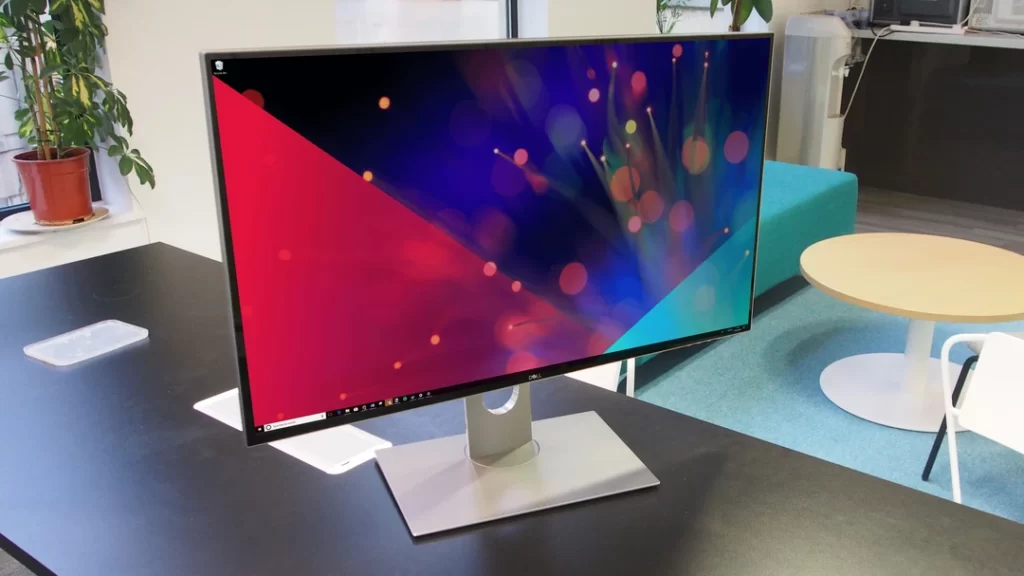
To make calibration even more concrete, let's walk step-by-step through two of the most popular monitors for designers:
BenQ SW2700PT Monitor Calibration
The BenQ SW2700PT is a 27″ QHD monitor specially designed for photography and graphic design. Here is how to properly calibrate it:
Step 1: Prep Your Workspace
You'll get the most accurate calibration in a workspace that controls ambient factors like:
- Lighting: Turn off overhead lighting and draw window shades
- Distance: Sit ~ arm's length away from your BenQ display
- Position: Centre your eyes in front of the monitor perpendicular to the screen
Minimising interruptions and eye fatigue helps you focus during the process, too. Get your calibration zen mode on!
Step 2: Set Your Monitor Initial Settings
Hop into your BenQ settings menu and configure:
- Brightness: 140-160 nits
- Colour temperature: 6500k
- Select “AdobeRGB mode” for a wider colour gamut
This gives calibration the correct baseline. Any unique display modes like “gaming” should be disabled.
Step 3: Initiate Calibration
Attach a sensor to monitor and initiate the calibration sequence using your preferred calibration device + software (SpyderX Pro recommended). Follow the on-screen guidance as the software analyses colours, prompts adjustments, and exports corrected profiles.
Step 4: Import Your New Colour Profile
Head to System Preferences > Displays on Mac or Advanced Display Settings on Windows to automatically import your calibration colour profile so colours stay true across the software.
For design apps like Photoshop, there is an option under Edit > Color Settings to sync the app display to your exported profile.
You did it – your BenQ monitor is now calibrated like a pro designer's!
Dell UltraSharp U2720Q Calibration
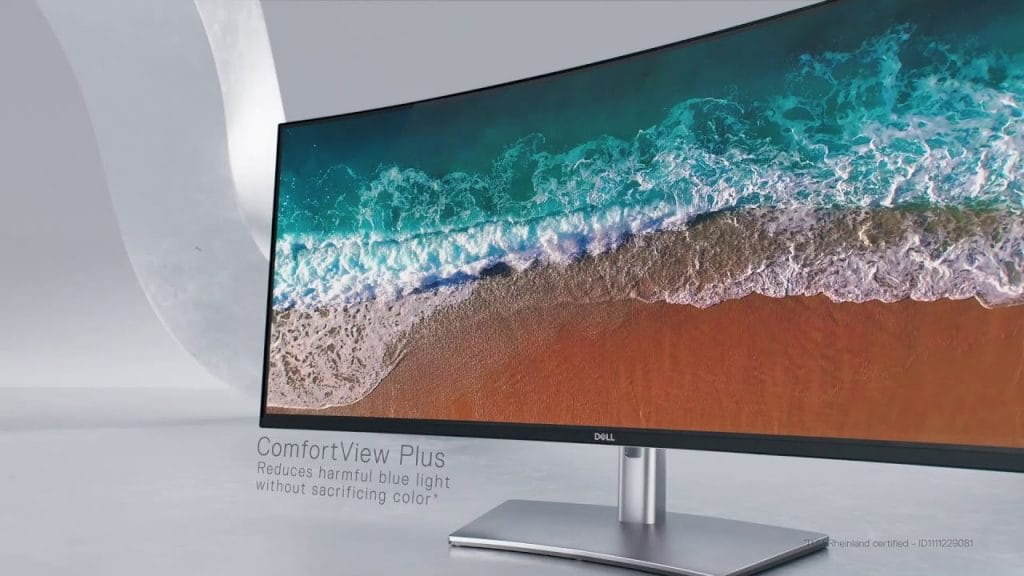
The Dell Ultrasharp U2720Q is another 27″ QHD crowd favourite monitor for creatives. Getting this one calibrated goes like this:
Step 1: Put Your Dell Monitor in Pro Mode
Out of the box, UltraSharps come in standard mode for vibrant colours. To ready for calibration:
- Press the menu button > select Color > scroll to Input Colour Format
- Choose RGB, which unlocks advanced colour settings
This “Pro mode” gives the most control for calibration to dial in.
Step 2: Adjust Initial Brightness and Temperature
Before letting calibration work its magic, manually configure:
- Brightness between 120-160 nits
- Colour temperature to 6500k
This aligns your monitor to optimal baseline targets.
Step 3: Run Your Calibration Software
With the brightness/temperature set, attach your calibration tool, initiate the software, and run through guided adjustment sequences. Easy!
Let the software optimise those RGB colour channels to perfection.
Step 4: Export and Import Colour Profile
Finish up by exporting your calibration profile file and adding it to colour settings in your OS display management and Adobe suite for consistency.
Voila, accurately calibrate the colour on your Dell!
FAQs and Troubleshooting for Monitor Calibration
Calibrating your monitor is very straightforward, following the step-by-step process. But I know hiccups or questions can come up along the journey!
Here are answers to frequent questions and troubleshooting tips I've picked up over the years calibrating displays:
Do I need additional monitor hoods or screens?
While a monitor hood can help limit ambient lighting interference, it tends to be overkill for most designers. As long as you reasonably control room lighting during calibration, there is no need for a hood.
My calibrated monitor still looks too warm/cool/bright – help!
Don't panic! Try closing and reopening applications/files to allow colour profile changes to take effect. Also, confirm that the profile is imported correctly into OS and Adobe suites. Still off? Recalibrate.
The software says my monitor failed calibration – should I worry?
“Failing” calibration is rare and indicates your monitor could not adjust colours within supported specs, often due to age or hardware issues. Try updating display drivers, then recalibrating. If problems continue, consulting display manufacturers about a replacement may be needed.
Is it necessary to calibrate all my displays, including my laptop, tablet, etc.?
Ideally, yes – consistency across ALL your displays is best! But for shorter workflows, calibrate just your primary monitor(s) on which you make critical colour decisions at a minimum. Tablets/phones are a lower priority.
How do I know when calibration gets “expired” and needs to be redone?
Don't rely on waiting to notice issues – mark calendar reminders every 1-2 weeks to recalibrate your monitor as routine upkeep for guaranteed colour accuracy! Quick preventive checkups beat scrambling to troubleshoot later.
Wrapping Up Monitor Calibration Best Practices
If you made it this far, you are now a monitor calibration expert ready to implement best practices that would make most designers envious!
To sum up key learnings:
- Why calibrate? Ensures colour accuracy consistency across devices, saves time/money down the road
- How often? Every 1-2 weeks for maintenance
- Process: Set monitor, use calibration tool+software, export profile
- Don't forget: Import profiles into OS and Adobe suites for systemwide corrected colours
Building a habit of regular calibration and profile importing will give you perfect colour representation, avoid headaches, and level up your design skills enormously.
Your future designer self will thank you – happy calibrating!
Last update on 2024-05-30 / Affiliate links / Images from Amazon Product Advertising API



